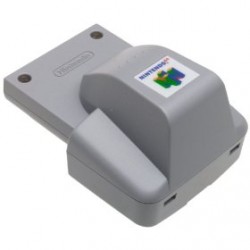 As the battle over who’s going to corner the market on motion controls continues to heat up, and companies beat their chests again over how it’s going to be the more powerful setup that will win the day, I couldn’t help but think that it’s going to be something incredibly simple (and old) that’s really going to be the deciding factor.
As the battle over who’s going to corner the market on motion controls continues to heat up, and companies beat their chests again over how it’s going to be the more powerful setup that will win the day, I couldn’t help but think that it’s going to be something incredibly simple (and old) that’s really going to be the deciding factor.
Naturally, this simple thing was brought to you years ago by Nintendo.
The “thing” is rumble, or force feedback, and for all the chest bumping going on at Microsoft right now over their “revolutionary” tech demo Natal—that’d be chest bumbing with each other and with the enthusiast press, mind you—I’m inclined to agree with Nintendo and, yes, Sony, when they say a motion peripheral needs some degree of physicality to be accepted by gamers.
Miyamoto agrees, as we saw earlier this week in remarks made to Wired.
I don’t think I could create an experience that truly feels interactive if you don’t have something to hold in your hand, if you don’t have something like force feedback that you can feel from the controller.
I agree. It doesn’t end with just holding something in your hand(s). Silly as it sounds on paper, I think you need that vibration too. I say silly because it is becoming increasingly apparent with Wii and DS titles that you actually need to PLAY these games and move around a bit before rendering a verdict. This is amusingly ironic when you think about it, as the more powerful games on the other two systems are actually more suited for review/preview on the pages of an archaic magazine or a Gametrailers video—these are actually far simpler mediums for reviewing or previewing games from a player’s perspective. The market is effectively disrupted, because Nintendo could care less about screenshots. It cares more about the motion, the rumble, etc.
To a lesser degree, I’ve also become increasingly fond of the speaker in the Wiimote, especially while playing the new Tiger Woods 10 title. The distinctive PING! you hear in your ear after a drive is deceptively simple, much like rumble. Half the time I don’t actively notice it, but if I were to lower the speaker volume, I’d definitely notice its absence.
The whole package immerses you, and the price tag appeals to you, and I find it fascinating that a cheap speaker and an ages-old rumble pack are what will really show that Natal, and possibly Sony’s wands, are the video game versions of The Emperor’s New Clothes.
